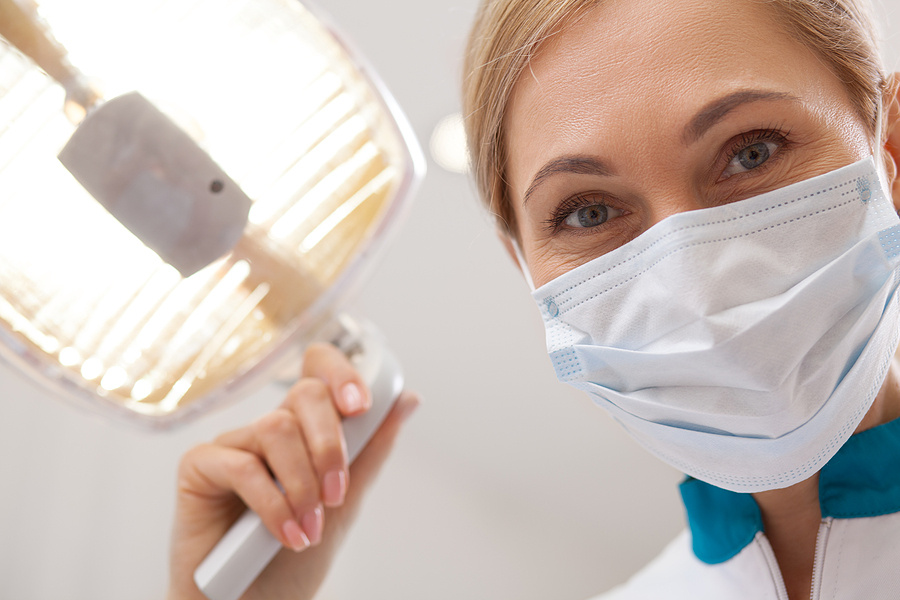Thinking about straightening your teeth as an adult? Here’s what you need to know
The ‘Zoom effect’ has led to greater demand for braces – but it’s important to carefully weigh up the options.
More than a year of video calling friends and colleagues has given us plenty of time to stare – critically! – at our own reflections.
According to the British Orthodontic Society, 60% of orthodontists have seen a greater than expected demand for teeth straightening over the last 12 months, as people become more conscious of their smiles.
For many, teeth can be the biggest bugbear in our appearance and a major zap on our confidence, and a survey by Bupa Dental Care last year found two in five of us (41%) are now spending money on looking and feeling good.

Dreaming about getting your own set of straight pearly whites? Make sure you do your research first…
How do teeth straighten and what are the options?
Experts can target crooked teeth in multiple ways: through orthodontics, with braces, or sometimes more discreet options such as clear aligners.
“In very simple terms, a brace places a gentle force on the crown of the tooth (the visible part of the tooth in your mouth), which stimulates it to move,” says Dr Richard Jones, specialist orthodontist at Total Orthodontics, part of Bupa Dental Care (bupa.co.uk).
“What’s happening beneath gum level is a bit more complex – the force of the brace on your crown is transmitted to the root of the tooth, which is connected to the bones in your jaw by connective tissues. Inside these connective tissues are cells, and when you apply a force to these, it stimulates a reaction where the cells resorb the bone. The teeth then move into the space created.”
There are lots of options to consider when you’re thinking of having braces fitted, including the type of braces that are most suitable for you. You might also want to consider how they’ll look, as some will be more visible than others.

Braces can help straighten crooked teeth
“You need to understand which type of treatment will give you the results you want, and which will be the most suitable for your teeth,” explains Jones. “Your orthodontist will go through your options with you and help you to decide what is the best orthodontic treatment for you.”
What are the different types of braces available and the benefits of each?
Braces tend to fall into four different categories, says Jones: “Fixed braces, commonly known as ‘train tracks’, have brackets which are glued onto your teeth and joined together with metal wire, which guides the movement of the teeth. They’re one of the most common types of braces because of their predictable and reliable results.”
These braces are traditionally used in NHS orthodontic care for eligible patients under 18 years of age (although adults may sometimes be eligible too) to treat a range of problems, such as missing teeth, severe crowding, abnormal bites (which can cause when problems eating and drinking), or if teeth protrude outwards. There are lots of different varieties of fixed braces, including clear braces that are made of a ceramic material to make them less obvious in the mouth.

Braces can help with severe teeth crowding
Jones continues: “A variation of fixed braces are lingual braces, also known as ‘hidden braces’ or ‘braces behind the teeth’. They work in a similar way to fixed braces, except the brackets are fixed to the inside of your teeth rather than the surface, making them more discreet.
“They can be used to fix several orthodontic problems, including overcrowded, spaced or misaligned teeth. A lot of skill and specialist equipment goes into fitting and adjusting lingual braces, which means they can be slightly more expensive than other teeth straightening treatments.”
Then there are removable, near-invisible aligners. “These aligners are made of a thermoplastic material and can be removed when eating or brushing your teeth. A well-known [brand] would be Invisalign,” says Jones. “They’re entirely transparent, so less noticeable, and custom-made to gradually straighten your teeth in stages, without the need for any metal wires or brackets.” Invisalign costs in the UK can typically range from £1200 to £5500.
View this post on Instagram
“They’re particularly popular with adults and will discreetly correct common orthodontic issues,” adds Jones. “Despite having been available for about 20 years, they’re proving more popular now because as technology has advanced, they have become an extremely effective treatment option.”
The final option is removable braces. As Jones explains: “These are simple braces used for specific treatments. For example, they’re commonly used for younger children who aren’t yet ready for fixed braces. If you have an under or overbite, you may be given a functional removable brace as a pre-treatment, before have a fixed brace or aligners.”
Can you straighten at any age?
Jones says: “Yes, you can straighten your teeth at any age. The majority of patients are children and adolescents and most problems are best treated when children have lost all their baby teeth, which tends to be between ages 10-14.”

However, the adult market has grown hugely in recent years. “I’ve treated patients in their 60s and 70s, so age doesn’t tend to be a barrier,” assures Jones. “Whatever your age, having healthy teeth and being suitable for treatment is the most important thing, creating the best conditions for a successful treatment.”
Will teeth go back to being wonky if you don’t wear retainers?
In short – yes. This is something that, until recent years, has been poorly understood. “Teeth move with age and have a ‘memory’ – they’ll do their best to move back to where they were before you had braces,” notes Jones. Teeth straightening is truly a lifelong commitment and wearing a retainer regularly will help you maintain the effect of your treatment.
“Start by wearing your retainer every night, like pyjamas for your teeth. You will be able to reduce this gradually, but it’s different for each patient. You will find a level that suits you but eventually, once or twice per week should be sufficient. I tell my patients that if your retainer starts to feel tight then you’re not wearing it enough.”
Anything else to consider before treatment?
“If you’re thinking of getting your smile straightened out, then investing in an electric toothbrush is a major must,” says Channel 4’s celebrity dentist for 10 Years Younger, Dr Uchenna Okoye. “It can be used to efficiently brush around the wires of the braces, which often can see plaque stick to it all.
“Braces work by being placed just so, ensuring a particular amount of pressure on the gums to physically shift the teeth around. So, make sure your gums are in tip-top condition before you get braces by flossing and brushing routinely.
It pays to think about your diet too. “There are certain things to avoid, most commonly with fixed braces, which have elastics to hold the wires in places and are great at picking up stains. I would avoid foods such as Bolognese, curry, and anything strong in spices,” says Jones.
It’s also wise to be diligent. As Dr Okoye explains: “Much like your teeth and gums, your braces will have to be regularly scrubbed and well maintained too, or else it’s just a waste of time and money.”
Whatever straightening treatment you’re considering, it’s important to visit a qualified orthodontist for an expert opinion on the most suitable, safe and effective treatment options for you.
The Press Association
Latest posts by The Press Association (see all)
- Sneak peek at new plants being launched at RHS Chelsea Flower Show - May 7, 2024
- How to attract more bees to your garden - May 3, 2024
- The costly insurance pitfalls to avoid when kitting out your garden this summer - May 3, 2024
- Gavin And Stacey’s best moments: From Smithy’s Indian takeaway to Pam eating ham - May 3, 2024
- Princess Charlotte ‘s ninth birthday marked by picture release - May 2, 2024





















